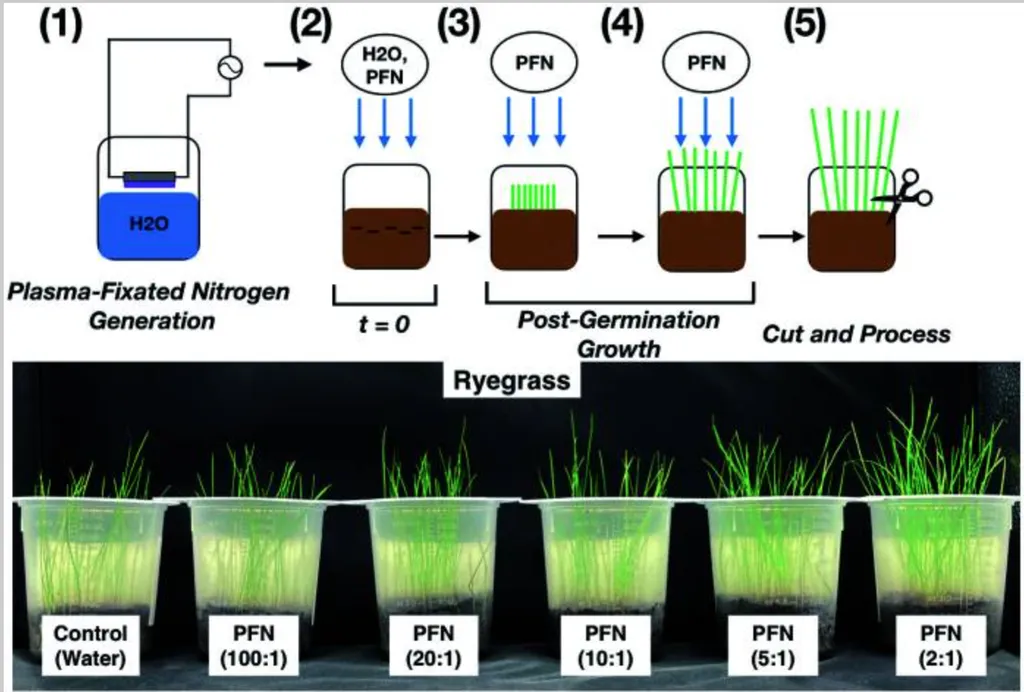In a groundbreaking study published in the open-access journal ‘PLoS ONE’ (which translates to ‘Open Journal’), researchers have unveiled the potential of Plasma Activated Water (PAW) as a sustainable alternative to conventional nitrogen fertilizers. The study, led by Jonathan Kizer, explores the efficacy of PAW in promoting plant growth and its potential to revolutionize the agricultural sector.
Nitrogen is a crucial nutrient for plant growth, and the demand for nitrogen fertilizers is expected to rise significantly in the coming years. However, the production of these fertilizers is energy-intensive and contributes to greenhouse gas emissions. This is where PAW comes in. Generated using non-thermal plasmas, PAW contains a range of chemical compounds, including nitrate and hydrogen peroxide, which can potentially serve as a sustainable alternative to traditional nitrogen fertilizers.
The study compared the effects of two PAW solutions with differing concentrations of hydrogen peroxide on the growth of Arabidopsis thaliana, a model plant often used in scientific research. The results were promising. “We found that PAW solutions lacking detectable hydrogen peroxide enhanced seedling growth,” said Kizer. “This suggests that PAW could be a viable alternative to conventional nitrogen fertilizers.”
The study also found that PAW-treated seedlings showed an induction of genes involved in nitrogen uptake and assimilation, indicating that the plants were able to utilize the nitrogen present in the PAW effectively. Moreover, pre-treatment of seedlings with PAW solutions containing hydrogen peroxide improved root growth under heat stress, suggesting that PAW may also induce plant stress response pathways.
The implications of this research are significant for the agricultural sector. If PAW can be produced and applied on a large scale, it could potentially reduce the reliance on conventional nitrogen fertilizers, leading to a more sustainable and environmentally friendly agricultural system. Moreover, the energy sector could also benefit from this technology. The production of PAW is less energy-intensive than the production of conventional nitrogen fertilizers, and the use of PAW could potentially reduce the energy demand of the agricultural sector.
However, the study also highlighted the need for a unified standard in PAW production. The varying chemical make-up that results from different devices and protocols hampers comparative studies and adoption of this technology. “We need to establish a standard protocol for PAW production to facilitate comparative studies and promote the adoption of this technology,” said Kizer.
The research conducted by Kizer and his team opens up new avenues for sustainable agriculture. As the world grapples with the challenges of climate change and food security, innovative solutions like PAW could play a crucial role in shaping the future of agriculture. The study not only provides a promising alternative to conventional nitrogen fertilizers but also underscores the need for further research and standardization in this field.

